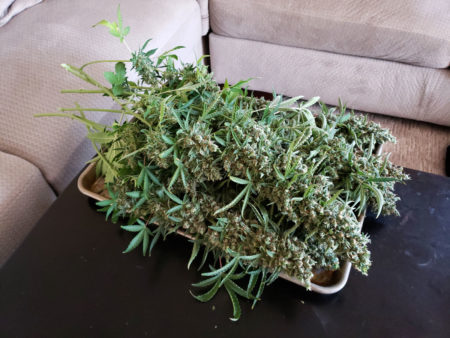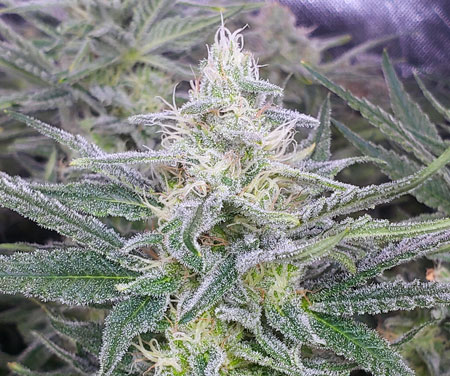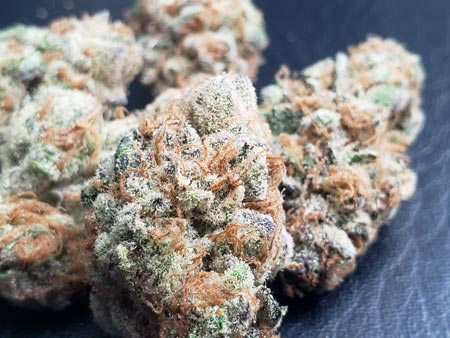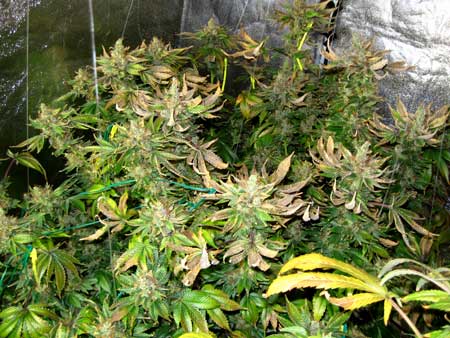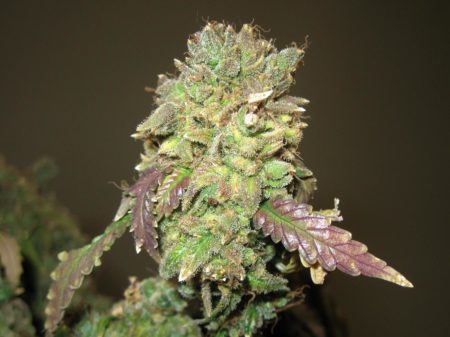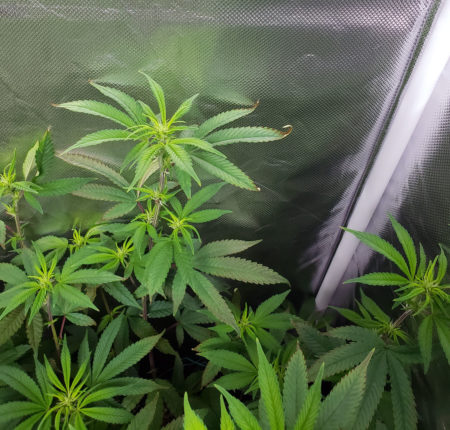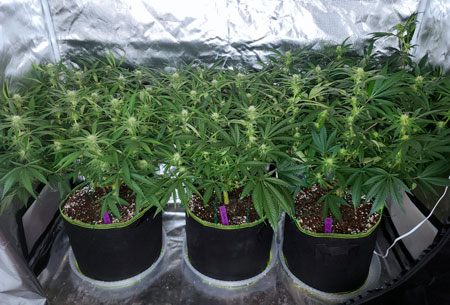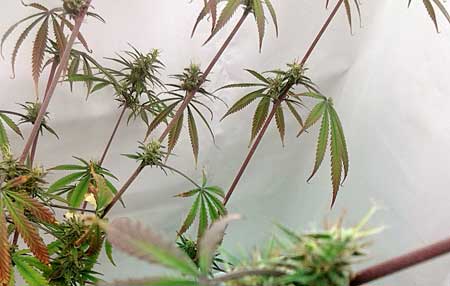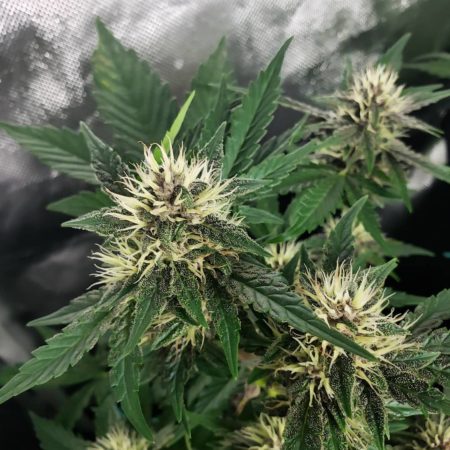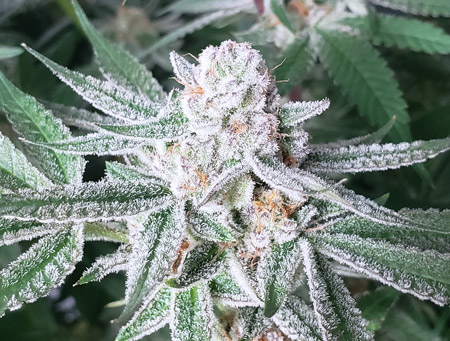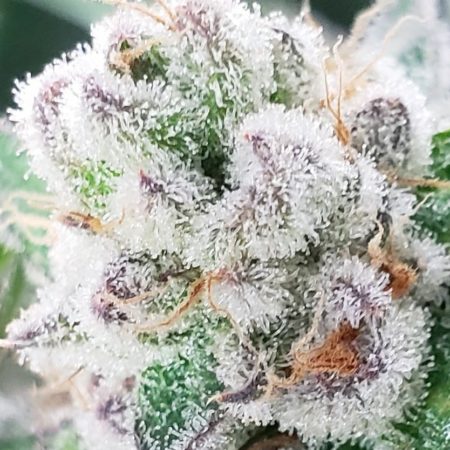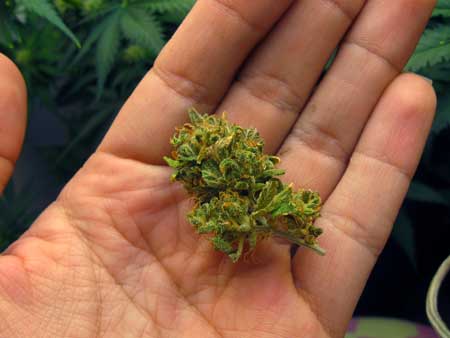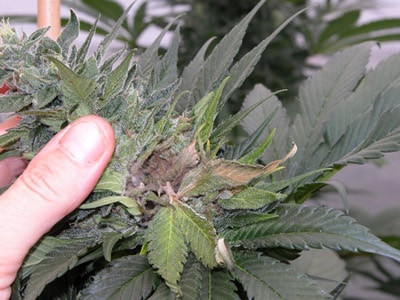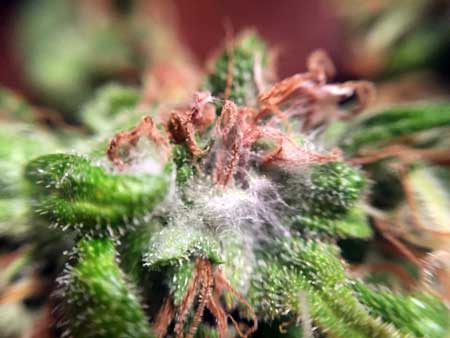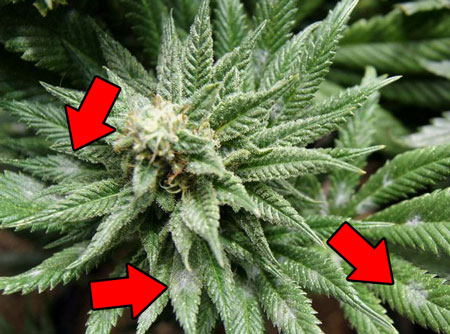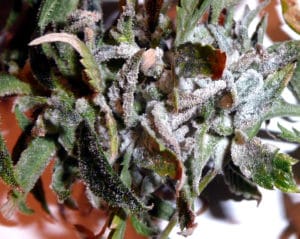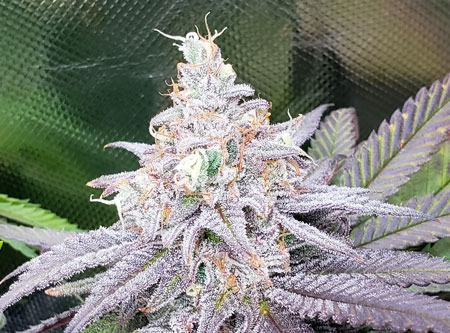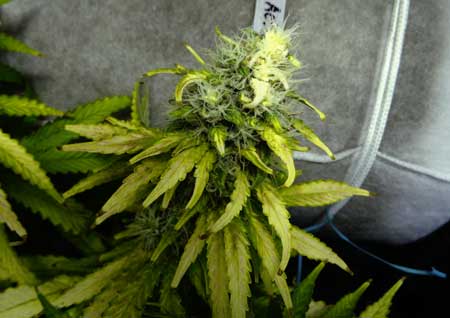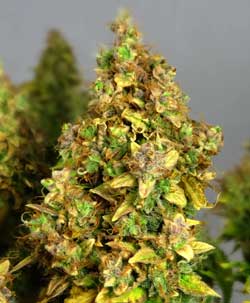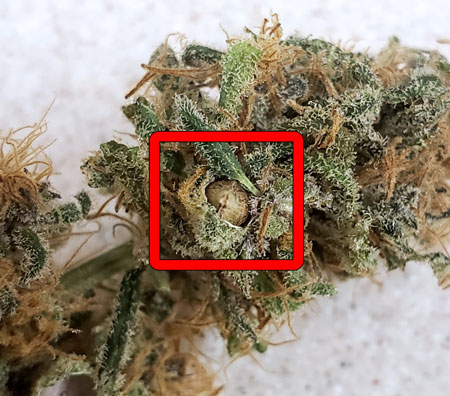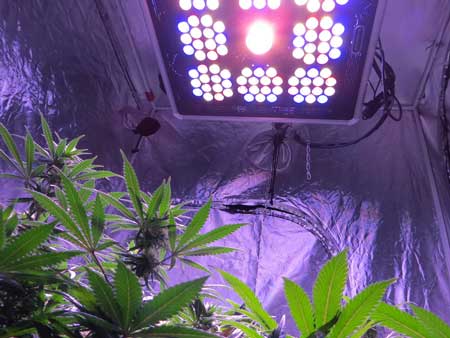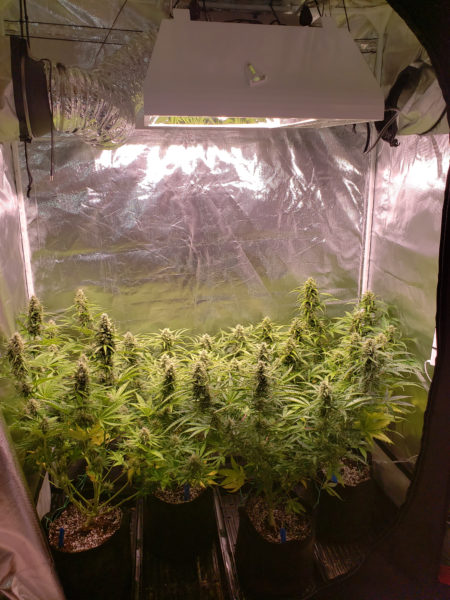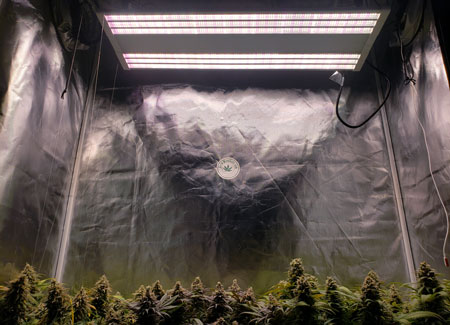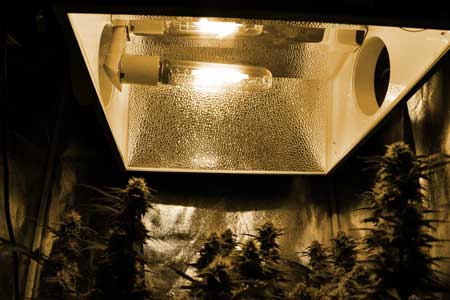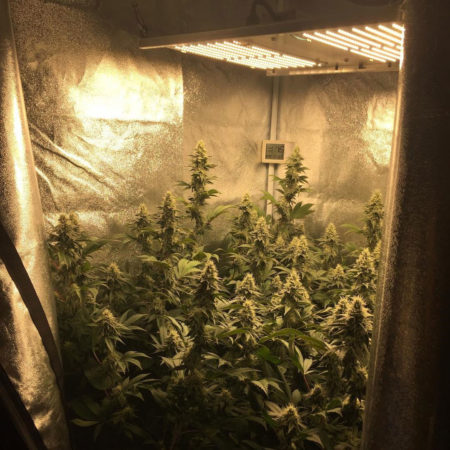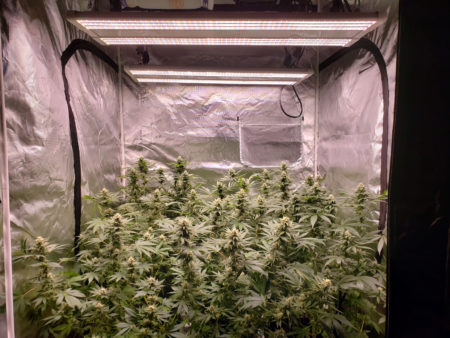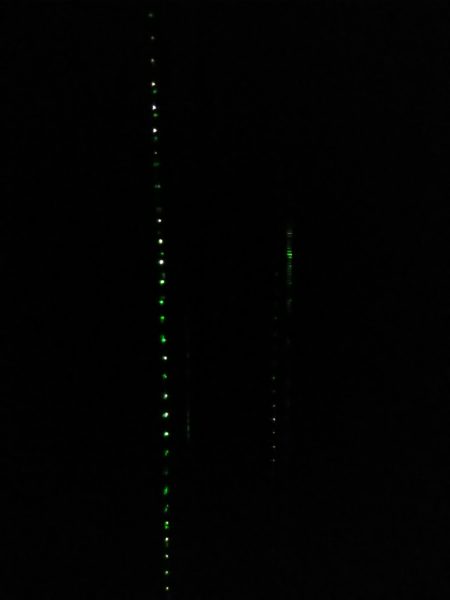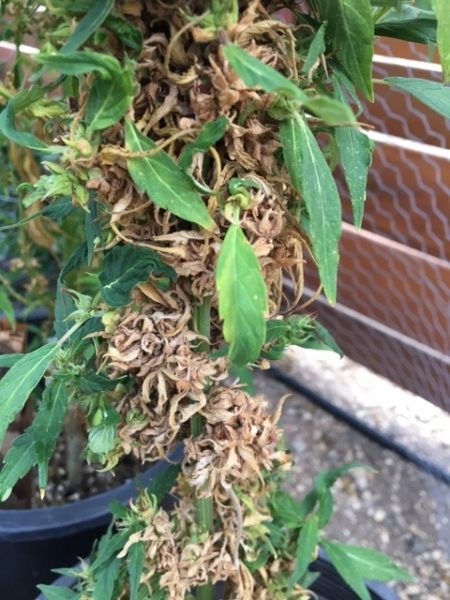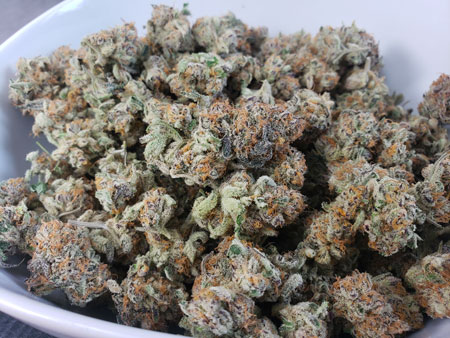by Nebula Haze
What’s the secret to unbelievable bud quality when growing cannabis indoors? How does a home grower produce epic yields of dense, potent cannabis buds?
Your growing medium and nutrients matter, of course, but the “secret sauce” to amazing bud quality is to craft the right environment during the flowering stage.
Gorgeous bud alert! Want to get the most from your cannabis strain? The secret to growing sparkly, sticky, top-shelf weed at home is to “pamper” buds with a great environment as they develop in the flowering stage.
A great flowering environment is crucial to pro-level weed growing:
- Bigger harvests – Increase overall cannabis yields by creating a better-than-nature environment that does most of the hard work for you.
- Maximize bud quality – Improve bud potency, trichome production, appearance, and smell. Most important during the 2nd half of the flowering stage.
- Fewer problems – Less likely to run into issues with bugs, watering, or deficiencies when plants grow in the right environment. Gain some peace of mind.
- Focus on what matters – The environment in the flowering stage has a greater effect on bud quality than almost anything else you can change, including the nutrient brand or supplements.
- Amplify genetics (X-factor) – The flowering environment is key to getting the best of your genetics. Especially pay attention to avoiding heat as harvest approaches.
Want to harness the power of the cannabis flowering stage environment in your own grow? Now is the time to start! Today I’ll teach you 7 ways the environment affects buds so you can produce the absolute best harvest possible. Master these 7 factors (usually just some small adjustment to “dial in” your personal setup) and you will be amazed at how much better buds turn out at harvest.
Learn how to “dial in” your flowering stage environment to produce superior buds.
Quick Summary: Ideal Flowering Stage Environment
- Temperature – 65-80°F (18-27°C)
- Humidity – 40-50% RH
- Grow Light – Bright light with far-red in the spectrum. High light levels and plenty of red during the cannabis flowering stage increases yields and bud potency.
- Airflow – Fresh air and a gentle breeze
Now that you understand what you’re aiming for in a general way, let’s dive deeper into how environmental factors affect bud quality so you know exactly what to focus on.
1.) How HEAT Affects Bud Quality
Too much heat hurts cannabis bud development and reduces quality. High temperatures cause the most damage when buds are close to harvest. Some strains are more heat resistant than others, but symptoms start for most strains above 80-85°F (27-30°C) in the flowering stage and get worse the higher the heat and the longer the heat lasts.
Effects of too much heat…
- Reduced bud smell and potency, especially if it was often hot the 2-3 weeks before harvest
- Hermies and bananas may appear, which lead to seedy buds
- Foxtails may appear, which are harmless but ugly growths on buds
- Attracts certain bugs like spider mites, and many pests multiply faster in heat
- Can trigger white powdery mildew when combined with low air circulation
Too much heat can severely hurt plants, especially if it goes on for days or weeks
Buds may be…
- small, airy, and fluffy
- discolored or burnt
- harsh to smoke
- poor or no taste/smell
- low potency
Too much heat can dramatically lower the quality of buds, especially their appearance
2.) How COLD Affects Bud Quality
It’s good to keep plants cool in the flowering stage, especially during the last several weeks before harvest while buds gain the majority of their potency, smell, and size. A slightly cool environment (around 73°F/23°C) as harvest approaches can improve bud potency and smell. Cool nights can help bring out colors like pink, purple, and red for some strains. However, plants grow slowly and buds stay small and airy if the environment is cold for the entire flowering stage so you need to wait until the end before letting the temperature drop.
Bad effects
- Stunted growth and bud development – Never let the temperature drop below 65°F/18°C if possible
- Plants get droopy and sick – Cold makes plants more susceptible to overwatering and nutrient deficiencies.
- Avoid cold at first – It’s good if the grow room is warm during the first part of the flowering stage. In fact, warmth helps buds get bigger at first. Buds stay small and airy if it’s cold for the entire flowering stage.
Good effects (last few weeks before harvest)
- Better bud quality – A slightly cool environment (around 73°F/23°C) as harvest approaches can improve bud potency and smell.
- No bud rot – Even fat buds are less likely to experience bud rot when it’s cool, especially when combined with low humidity
- Fewer pests – Pests typically prefer the heat and are less likely to infest a plant when it’s cool.
If possible, keep buds cool as harvest approaches to improve bud quality!
Cold plants grow slowly and may display odd symptoms like leaf curling, yellowing, and nutrient deficiencies
1st half of flowering stage – Aim for 78°F/26°C for fastest growth and biggest buds
- Before buds have fully formed (when they still look like a bunch of white hairs), the temperature doesn’t have a huge effect on bud quality
- Plants grow faster and buds get bigger when it’s warm, so don’t let plants get cold in the first half of the flowering stage
- Focus on plant health and structure – don’t worry too much about avoiding heat just yet
- Fast, healthy growth in the early flowering stage is key to developing lots of big/long bud sites
Keep plants warm during the first half of the flowering stage so plants grow fast and develop big, long bud sites
Don’t let the temperature drop too early as it can stunt bud growth and reduce your yields. These buds stayed small because the plant was cold for the entire flowering stage.
2nd half of flowering stage – Aim for 73°F/23°F as buds approach harvest to protect bud quality
- After buds have formed, a cool environment helps preserve bud smell and potency
- Most important: Avoid letting it get hot!
- Cold nights bring out colors like pink, purple, and red (if genetics allow), especially if temperature swings from day to night
- If trying to bring out colors, make sure to wait to drop temperature until 1-2 weeks before harvest to avoid stunting
Keep the grow space cool (but not cold) after buds have formed
Cold nights during the last 1-2 weeks before harvest can help bring out colors for some strains (both buds and leaves)
Bud quality (smell, taste, appearance, and potency) is best when plants are not allowed to get hot after buds have fully formed
Closeup – these plants received 70-75°F (20-23°C) for the 2nd half of the flowering stage
3.) How HIGH HUMIDITY Affects Bud Quality
Aim for 40-50% RH during the flowering stage for the best bud quality. A little higher is okay.
Above 60% RH…
- Greater chance of bud rot, mold, and powdery mildew
- Slow growth & smaller yields
- Buds tend to be less dense
- Nutrient deficiencies more likely due to poor water transport through the plant
High humidity can cause buds to grow small and loose
High humidity increases the chance of buds rotting from the center, which requires you to throw away the entire bud. Noooooo.
Mold growing on buds due to high humidity.
Powdery mildew also loves high humidity. It appears as random spots that look like flour or white powder.
Powdery mildew is often found on leaves but can spread to your buds if ignored.
4.) How LOW HUMIDITY Affects Bud Quality
- Great trichome production when humidity is 40-50%
- Low humidity greatly reduces the chance of bud rot, even if buds are fat
- You may see unhealthy, stressed growth if humidity gets under 35% RH
- Buds may not fatten as well in low humidity, though some plants don’t mind (especially if plants grew up in low humidity)
Aim for 40-50% RH in the late flowering stage for healthy buds with great trichome production
5.) How TOO-CLOSE LIGHT Affects Bud Quality
Even if the temperature is under control, you can actually harm plants by giving them too much light. Typically this happens when indoor grow lights are kept too close.
Too-close grow lights produce problems:
- Can burn off terpenes (smells) and cannabinoids (potency)
- Foxtails
- Hermies (causing seeds)
- Bleaching
Examples of light-bleached buds
Buds that have been discolored by light burn. Damaged buds look a little ragged and often have reduced smell and potency.
Light stress can cause seedy buds even if herms don’t appear
6.) How TOO-FAR LIGHT (or POOR QUALITY LIGHT) Affects Bud Quality
- Leaves tend to be happy at relatively low light levels, but that’s not what we’re maximizing our grows for.
- Without enough light, buds don’t get as big as they could have.
- Buds also tend to be less potent (lower THC) without the right light levels.
- When lights are way too far, buds basically stop growing altogether.
Keep lights the proper distance away to maximize bud quality and yields.
Every grow light has an optimal distance from plants. This LEC grow light does best at 18-24″ away depending on the strain and bulb used.
Each model of LED grow light is different when it comes to the best light distance, so look at the manufacturer’s specifications or product details for guidance. This LED grow light produced excellent bud quality and size at 24″ away.
As long as the heat is under control, HPS grow lights can typically be kept closer than LEC or LEDs for the same wattage. This 250W HPS does best about 12″ away from the tops of plants.
7.) How LIGHT SPECTRUM Affects Bud Quality
- UV (Ultraviolet): increase trichomes and smells
- Blue: a spectrum that’s heavy in blue tends to keep buds smaller, may contribute to more trichomes, and may shorten the flowering stage
- Green: necessary for plant health and fastest growth
- Red: grow lights with a lot of red tend to produce bigger and more potent buds, but also may cause the flowering stage to last a bit longer
- Far-Red: necessary for photoperiod buds to develop properly, seems to contribute to the best bud development and may add potency up to a point
The best flowering grow lights have a bit of blue and green, lots of red and far-red, and a bonus if it produces UV light (though watch your eyes!). The best flowering grow lights often appear white, yellow, or pink to the human eye.
One last thing about photoperiod strains…
Photoperiod strains need 12 hours of total darkness every day to produce buds. If there are light leaks (light gets to the plants during their dark period), photoperiod strains will…
- Re-Vegetate – Revert back to vegetative stage (any buds will die)
- Herm – May trigger pollen sacs or bananas (causing seeds)
Check your grow space for light leaks (like these ones I saw along the seam of my grow tent when I got inside and shut the door)
Plants may revert back to the vegetative stage due to light leaks. When this happens your buds shrivel and die.
Don’t leave it to chance. Check inside grow space to ensure no light gets in from outside. Learn more about cannabis light schedules and light leaks.
I’m so proud of you! You made it to the end of the article. You now know exactly how to maintain bud quality in the flowering stage. Learn how to easily create the perfect weed-growing environment.
And don’t forget these other important factors to exceptional bud quality:
- Choose the right strain for your needs 👈 (Important!)
- Get a cannabis-friendly growing medium
- Ensure plants get the right nutrients
- Dry and cure your buds properly after harvest
About the Author
Nebula Haze has been helping indoor cannabis growers since 2010 when she co-founded GrowWeedEasy.com with her partner Sirius Fourside. Since then, she’s dedicated her life to helping home growers produce pro-level results. Check out our weekly newsletter to get new cannabis grow articles delivered to you every Sunday!
Happy growing!

